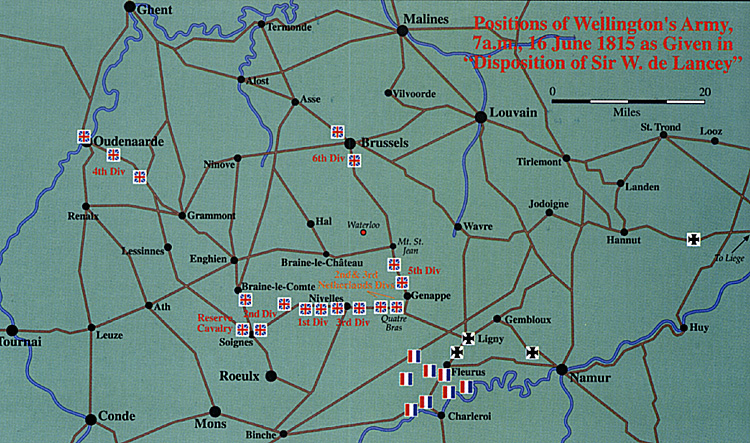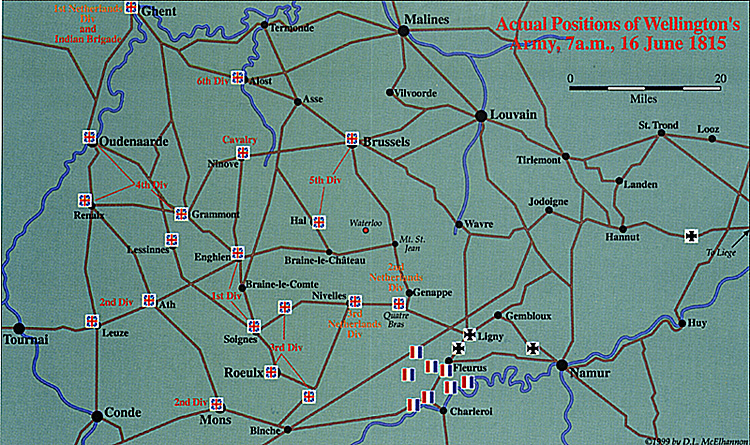These two maps are based on the ones in Peter Hofschroer's new book 1815: The Waterloo Campaign. They illustrate the key element in his controversial claim that the Duke of Wellington intentionally deceived his Prussian allies about the position of his army. Hofschroer argues that based on the letter the Prussians received on 16 June from Colonel Sir William Howe de Lancey, Wellington's deputy quartermaster general (see first map this page), Field Marshal Blucher decided to stand at Ligny with three of his four corps (the fourth Prussian corps was marching from Liege to Hannut and could not reach the battlefield that day).
Wellington's Anglo-Allied Army was actually widely dispersed (see second map on opposite page) and could not assemble around Quatre Bras as quickly as the de Lancey letter implied. Therefore, Wellington would not be able to march to Blucher's 'aid. Some historians believe that Wellington promised to send troops only if he was not himself attacked. Hofschroer challenges this idea, and maintains that Blucher could have fought in a less exposed position around Gembloux if the de Lancey letter had been more honest about Wellington's scattered forces. This incredibly inaccurate dispatch from de Lancey raises serious questions that have gone unanswered (de Lancey was mortally wounded at Waterloo and Wellington never wrote about the campaign).
Although the Prussians were defeated at Ligny on the 16th, a complete disaster was narrowly avoided when Napoleon's orders were ignored or disobeyed and French forces approaching Quatre Bras failed to march into the Prussian's right rear at Ligny. Had this transpired, most of the Prussian army would have been destroyed or otherwise unable to retreat to Wavre. (Historically, they marched from Wavre to support Wellington two days later. This support was key to Wellington's decision to stand and fight at Waterloo, and the arrival of the Prussians tipped the balance against Napoleon.) A major Prussian defeat at Ligny would have left Wellington alone to face Napoleon's victorious army, thereby changing the course of the 1815 campaign.


More Waterloo
-
Waterloo Controversy
Waterloogate
Waterloo: Large Disposition Maps (very slow: 263K)
Waterloo: Jumbo Disposition Maps (extremely slow: 518K)
Waterloo: Wellington Reappraised
Book Review: 1815: The Waterloo Campaign
Back to Table of Contents -- Napoleon #14
Back to Napoleon List of Issues
Back to MagWeb Master Magazine List
© Copyright 1999 by Napoleon LLC.
This article appears in MagWeb (Magazine Web) on the Internet World Wide Web.
The full text and graphics from other military history magazines and gaming magazines are available at http://www.magweb.com
Order Napoleon magazine direct